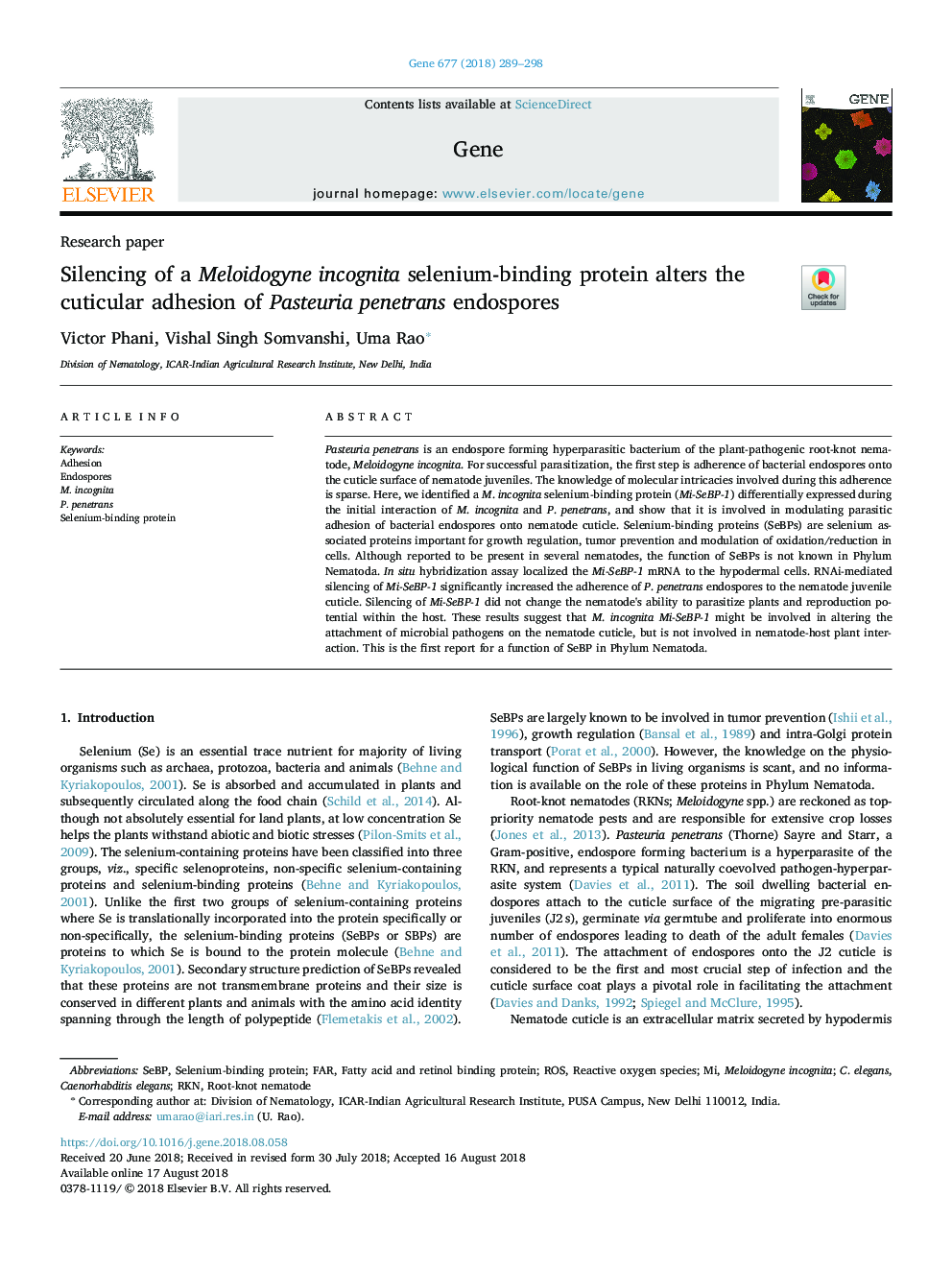| کد مقاله | کد نشریه | سال انتشار | مقاله انگلیسی | نسخه تمام متن |
|---|---|---|---|---|
| 8644428 | 1569759 | 2018 | 10 صفحه PDF | دانلود رایگان |
عنوان انگلیسی مقاله ISI
Silencing of a Meloidogyne incognita selenium-binding protein alters the cuticular adhesion of Pasteuria penetrans endospores
دانلود مقاله + سفارش ترجمه
دانلود مقاله ISI انگلیسی
رایگان برای ایرانیان
کلمات کلیدی
موضوعات مرتبط
علوم زیستی و بیوفناوری
بیوشیمی، ژنتیک و زیست شناسی مولکولی
ژنتیک
پیش نمایش صفحه اول مقاله

چکیده انگلیسی
Pasteuria penetrans is an endospore forming hyperparasitic bacterium of the plant-pathogenic root-knot nematode, Meloidogyne incognita. For successful parasitization, the first step is adherence of bacterial endospores onto the cuticle surface of nematode juveniles. The knowledge of molecular intricacies involved during this adherence is sparse. Here, we identified a M. incognita selenium-binding protein (Mi-SeBP-1) differentially expressed during the initial interaction of M. incognita and P. penetrans, and show that it is involved in modulating parasitic adhesion of bacterial endospores onto nematode cuticle. Selenium-binding proteins (SeBPs) are selenium associated proteins important for growth regulation, tumor prevention and modulation of oxidation/reduction in cells. Although reported to be present in several nematodes, the function of SeBPs is not known in Phylum Nematoda. In situ hybridization assay localized the Mi-SeBP-1 mRNA to the hypodermal cells. RNAi-mediated silencing of Mi-SeBP-1 significantly increased the adherence of P. penetrans endospores to the nematode juvenile cuticle. Silencing of Mi-SeBP-1 did not change the nematode's ability to parasitize plants and reproduction potential within the host. These results suggest that M. incognita Mi-SeBP-1 might be involved in altering the attachment of microbial pathogens on the nematode cuticle, but is not involved in nematode-host plant interaction. This is the first report for a function of SeBP in Phylum Nematoda.
ناشر
Database: Elsevier - ScienceDirect (ساینس دایرکت)
Journal: Gene - Volume 677, 30 November 2018, Pages 289-298
Journal: Gene - Volume 677, 30 November 2018, Pages 289-298
نویسندگان
Victor Phani, Vishal Singh Somvanshi, Uma Rao,